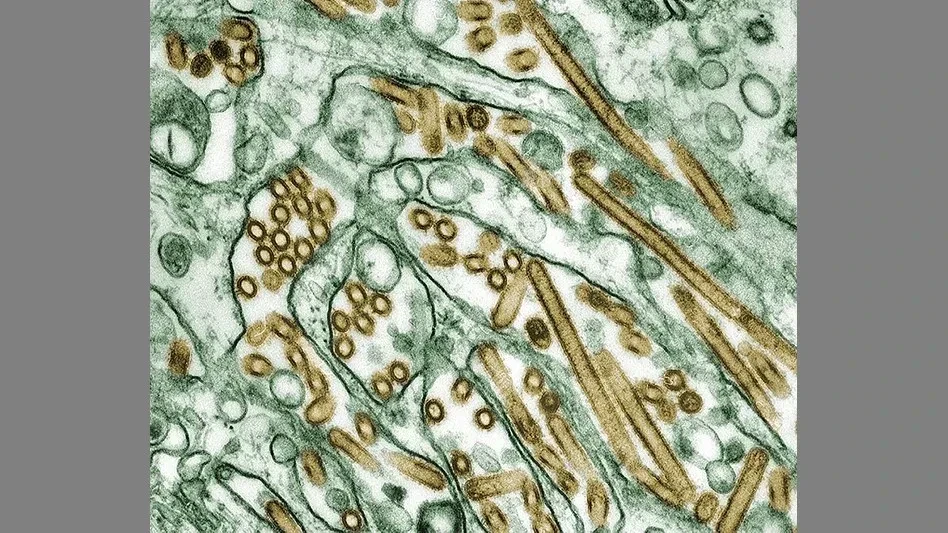 |
A look back.
Looking back at the last 10 years in the food industry reminds me of the Chinese proverb, “May you live in interesting times.”
This past decade has included many significant events and changes to the food industry. Just a few of the more interesting events that are top of mind for me over the last 10 years—and those I see as helping to transform and shape the food industry in the future are:
- The incredible number of major foodborne outbreaks, recalls, and media attention resulting from the 2006 multi-state E. coli outbreak from bagged spinach;
- The heightened awareness and concerns about food allergens and the attempt to make labeling a silver bullet;
- The increasing globalization of the food supply and the Global Food Safety Initiative (GFSI) movement to evolve food safety from “point-in-time” audits to certification of food safety and quality systems;
- The scientific developments that allow us to see food safety and quality risks well beyond what we saw 10 years ago and that have uncovered new bugs and pathogens that we didn‘t know existed.
- The technology enhancements that allow us to capture and analyze more data more quickly;
- The recognition of food fraud as a significant problem and the actions taken to address the issue;
- The development of collaborative groups from different industries and sectors, such as the Center for Produce Safety, that come together to provide real-life solutions to real-life problems;
- The new food safety laws and the upcoming regulations in the U.S.;
- And finally, the increased attention from consumers in regard to recalls and outbreaks and concern about the safety of their foods.
While just a sampling, each of these interesting and significant events have brought to light the impact that every link of the food chain has on food safety and the importance of carefully evaluating and continuing to improve every link to minimize risk. All have, in one way or another, brought new opportunities for making industry processes more efficient and effective, as well as improving food safety, quality, or shelf life to help us deliver safer, more cost-effective products. These events have also highlighted the remaining challenges we face as an industry and underscore the importance of continuing to evolve our safety methods to match the evolving food chain.
US Foods.
From a company standpoint, these last 10 years have been equally significant for US Foods. [Since the QA Cover Profile of March/April 2010] we changed our name from US Foodservice to US Foods and have undergone a company-wide transformation that will propel us toward our goal of being a great American food company focused solely on foodservice.
Included in the transformation is a renewed approach to food safety and quality. In the last 10 years, we shifted from being reactive to proactive in terms. We moved from an organization that used the laws, regulations, and customer requirements as our benchmark for safety and quality to one that looks at risks and uses best practices as a compass.
We have established a food safety culture across the company, making cold chain management a top priority; developing job-specific food safety training for the staff at our more than 60 distributions centers; uncovering food fraud as a significant risk in seafood; and using DNA testing to validate seafood species—and requiring it from our suppliers of the species most likely to be mislabeled.
We also recognized that the regulatory system in the U.S. was in need of improvement and were one of a select number of food companies that provided public support for the Food Safety Modernization Act (FSMA). Realizing that the conventional auditing system needed to be re-vamped, we began requiring the certification of food safety and quality systems for the more than 1,200 suppliers of our private label products produced in 10 different countries. We also took the same approach for ourselves and are working toward the certification of our food safety and quality systems at all our distribution centers. When completed in 2014, US Foods will become the first U.S. company with private-label products certified for safety and quality from farm or sea to the customer’s kitchen. This certification give customers the peace of mind of knowing that the products are certified safe and of high quality.
The Future.
Over the next 10 years, I can only imagine that the pace of change for the food industry will accelerate. I believe that the spotlight on food safety, quality, and regulatory compliance will continue to be strong, but it will be shared with issues like GMO, animal welfare, local food, and food-worker rights.
Foodservice customers and consumers will continue to demand more transparency, wanting to know more about how their food was grown and how it got from point A to point B. For this reason the ability to capture data all along the food chain will become more important than ever. At the same time, it is becoming more and more critical that the consumer have a certain understanding of food and food safety and confidence that their food was handled in such a way as to control and minimize the risk. Similarly, there needs to be more education around the term “local foods.” While buying local has a certain appeal for some, it is important that consumers understand that local has nothing to do with food safety.
I would also expect that there will be more focus on food fraud and food defense, especially when an event becomes national news. Traceability and data capture along the food chain will be central to the future as customers demand a lot more real-time information about the products they buy. Most food companies will likely embrace the concept of food safety culture or will execute it as part of a model like Enterprise Risk Management (ERM). There will be more organizations like GFSI and the Center for Produce Safety where like-minded leaders from industry, government, and academia come together united in purpose, such as “safe food everywhere” or “provide actionable information to continually enhance the safety of produce,” to solve the real food safety and quality problems of the industry.
In reality, 10 years is not a lot of time, but the transformation that the food industry will have to undergo to keep pace with the food chain will be significant. One thing is certain, there will continue to be interesting times.

Explore the August 2013 Issue
Check out more from this issue and find your next story to read.
Latest from Quality Assurance & Food Safety
- Nestlé Opens Arizona Beverage Factory and Distribution Center
- Ingredion Invests $100 Million in Indianapolis Plant to Improve Efficiency, Enable Texture Solutions Growth
- Eagle Unveils Redesigned Pipeline X-ray System
- USDA Invests Up To $1 Billion to Combat Avian Flu, Reduce Egg Prices
- Washington Cats Confirmed with HPAI as Investigation into Contaminated Pet Food Continues
- USDA Confirms Bird Flu Detected in Rats in Riverside
- Kyle Diamantas Named FDA’s Acting Deputy Commissioner for Human Foods
- QA Exclusive: Food Safety Leaders React to Jim Jones’ Departure, FDA Layoffs





